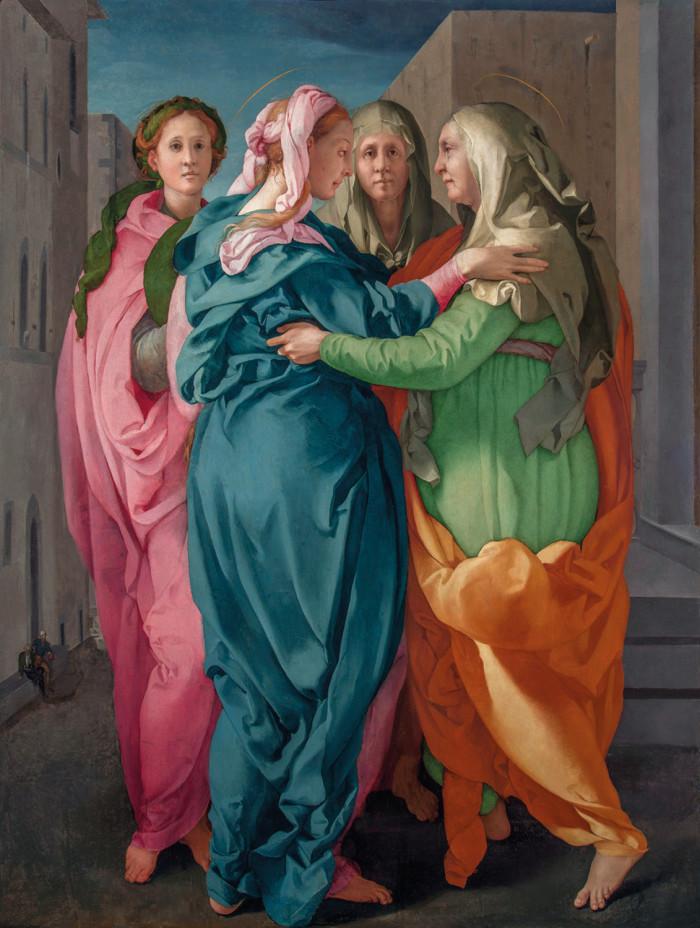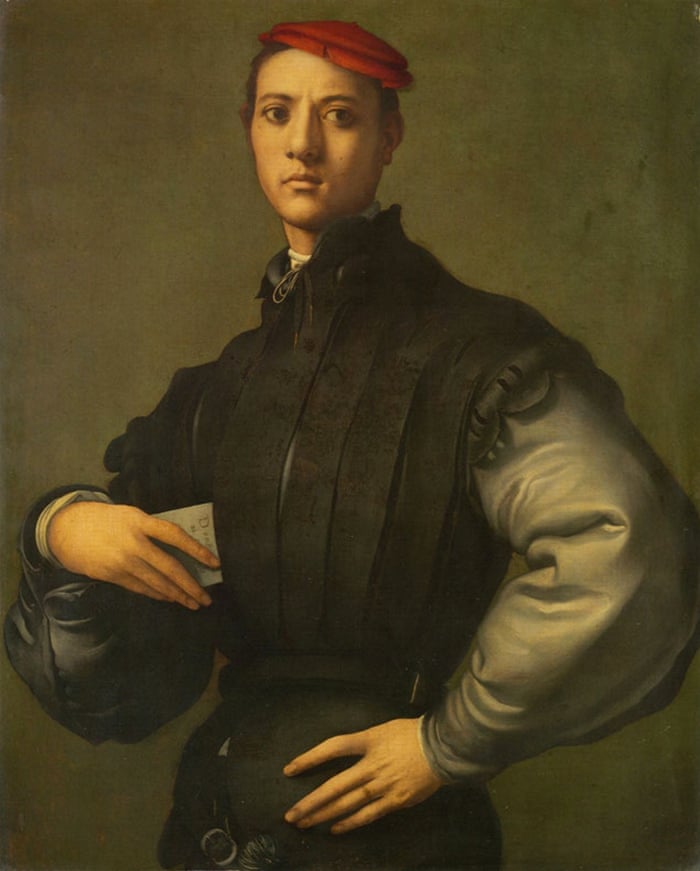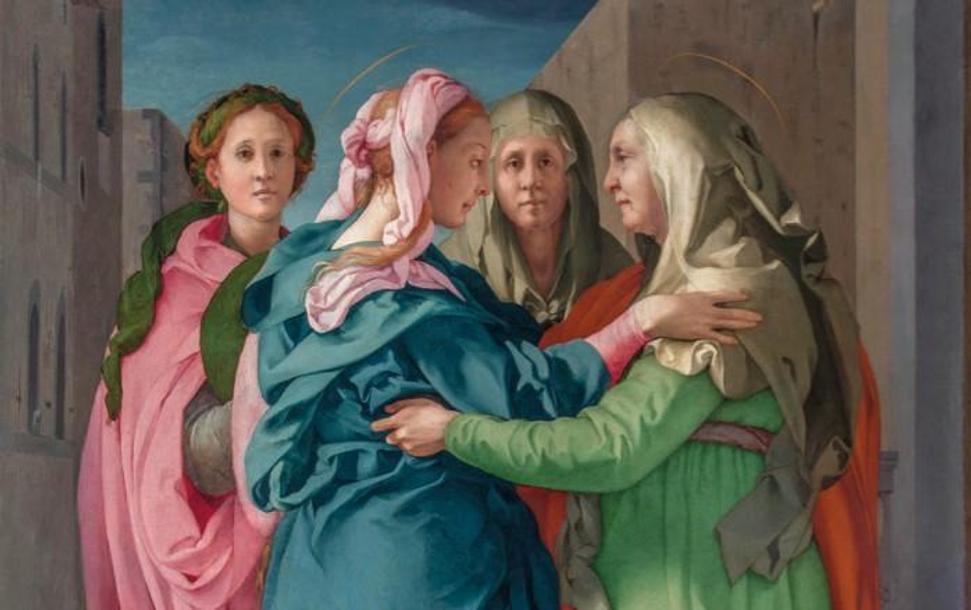An international traveling exhibition will bring works by the great 16th-century Florentine painter Pontormo (Italian, 1494-1557) to Los Angeles for the first time. Pontormo: Miraculous Encounters, on view at the J. Paul Getty Museum from February 5, 2019 through April 28, 2019, features the artist’s recently restored altarpiece the Visitation (about 1528-1529). The exhibition was previously at New York's Morgan Library and at the Pitti Palace (Uffizi Gallery) in Florence.
“It is a privilege to bring the Visitation, one of Pontormo’s supreme masterpieces and one of the most enigmatically beautiful paintings of 16th-century Italy, to Los Angeles. This is the first time this painting has traveled to the United States. It is one of those exceptional paintings that, once seen, will never be forgotten, and I have no doubt it will be a revelation to our visitors both for its striking beauty and for its moving depiction of a key episode in recognition of Christ’s coming,” said Timothy Potts, director of the Getty Museum.
Organized by the Getty Museum in conjunction with the Gallerie degli Uffizi in Florence and the Morgan Library & Museum in New York, the exhibition presents works of exceptional importance by Pontormo, looking at his innovative oeuvre as a painter both of devotional subjects and of portraits.

Jacopo da Pontormo (1494–1557), 'Visitation' (c. 1528-29), oil on panel, Parrocchia dei Santi Michele e Francesco, Carmignano.
photo: Antonio Quattrone
The recent restoration of the panel brought to light important information about the artist’s technique that illuminates the artist’s creative process. The Visitation is shown alongside the only known preparatory drawing for it, on loan from the Uffizi, as well as two painted portraits and their related drawings.
“By presenting the Visitation and two portraits produced in the same years alongside their preparatory drawings, this exhibition gives us a rare opportunity to reconsider Pontormo’s artistic evolution at a crucial stage in his career,” explained Davide Gasparotto, senior curator of paintings at the Getty Museum. “It is especially moving to think of a great master like Pontormo working at the height of his skill during such a tumultuous period, when his city was under siege. His elegant and accomplished work from this era is imbued with a compelling vulnerability and sentiment.”
The paintings and drawings presented in the exhibition were made by Pontormo between 1528 and 1530, during an ongoing crisis in Florence. Though Republican forces had driven out the powerful Medici family in 1527, the triumph was short-lived. Dramatic military clashes culminated in a devastating siege that returned the Medici to power, establishing their autocratic regime as dukes of Florence. Pontormo was not active in the city’s defense during the siege, but just before these events he had managed to purchase his home, a lifelong aspiration: he stayed in the city to protect his investment, seeking employment from the citizens who remained. These patrons commissioned portraits to record their appearance for posterity, wearing the latest fashions that demonstrate military readiness and active support of the Republic. They also commissioned devotional works, as they prayed for deliverance from military strife and starvation.

Pontormo’s Portrait of a Halberdier, 1529-1530, a well-known painting in the Getty’s collection, depicts a young man standing before a fortress wall dressed as a soldier, holding a halberd (a combination spear and battle ax). The formidable dress and pose of the subject is betrayed by his youthful face and slim build. The subject of this sophisticated and elegant portrait was convincingly recognized as a young nobleman named Francesco Guardi (who would have been 14-15 years old) though it has also been speculated that it may depict Cosimo de’ Medici, the future Grand Duke.

Jacopo da Pontormo (1494–1557), Portrait of a Young Man in a Red Cap (Carlo Neroni?), ca. 1530, oil on panel. Private collection. Collection of Mr. and Mrs. J. Tomilson Hill.
photo courtesy of Shepherd Conservation, London
Another highlight of the exhibition is the rarely seen Portrait of a Young Man in a Red Cap, another captivating portrait from the same year. The painting, perhaps depicting another young man engaged in the defense of the city, Carlo Neroni, was known to scholars through documents and engravings but thought lost until it was re-discovered in 2008. This exhibition offers the public a first opportunity to see this remarkable work — which belongs to a private collection — following its recent restoration.
The exhibition is curated by Getty Museum Senior Curator of Paintings, Davide Gasparotto and Bruce Edelstein, coordinator of graduate programs and advanced research at NYU Florence.


The accompanying publication, Miraculous Encounters: Pontormo from Drawing to Painting, is published by Getty Publications and edited by Gasparotto and Edelstein.

Detail of Pontormo's 'Visitation'